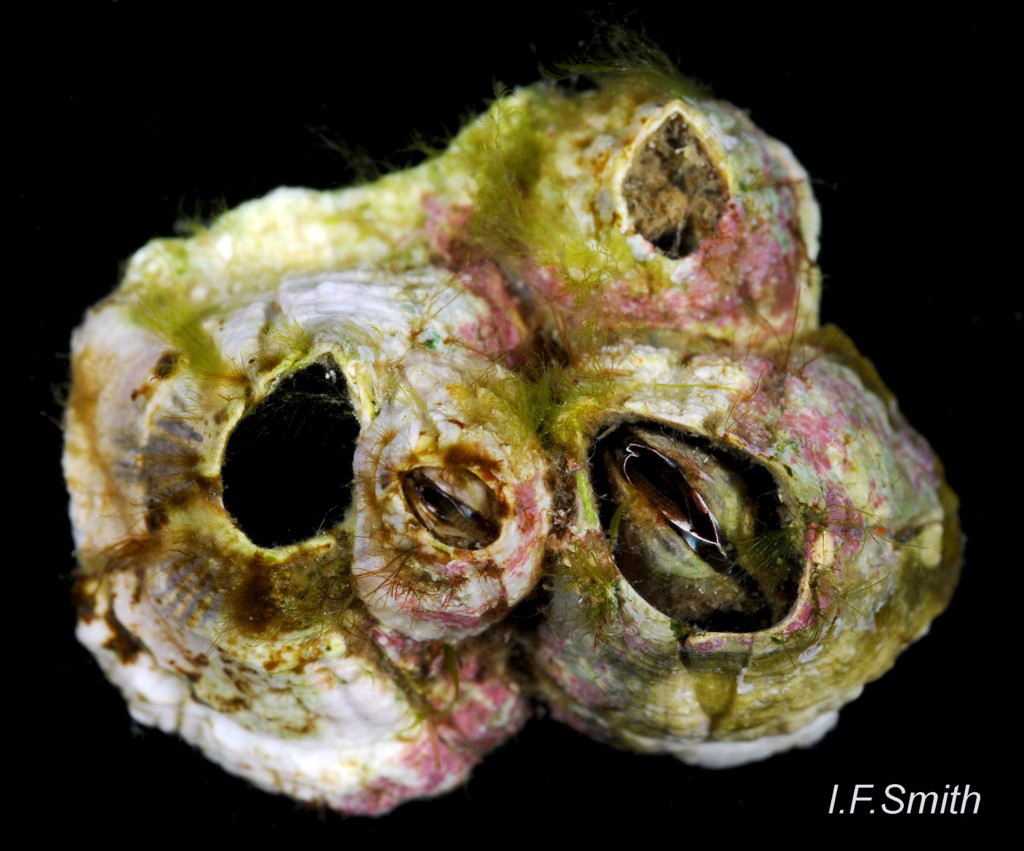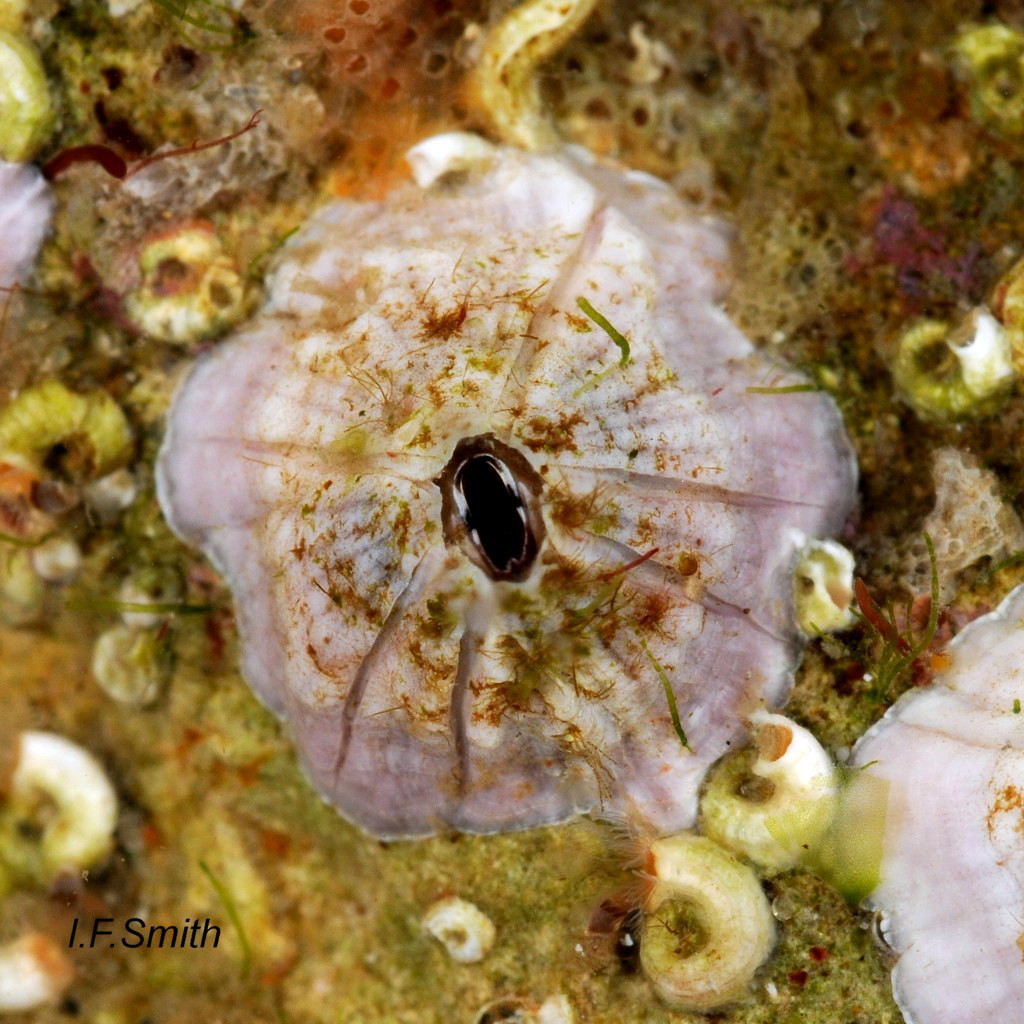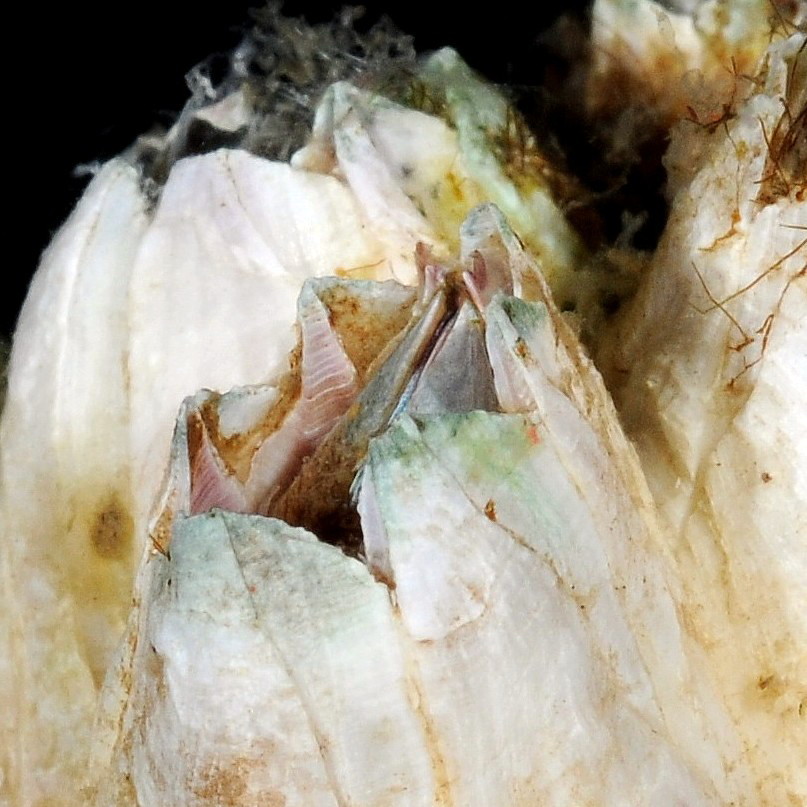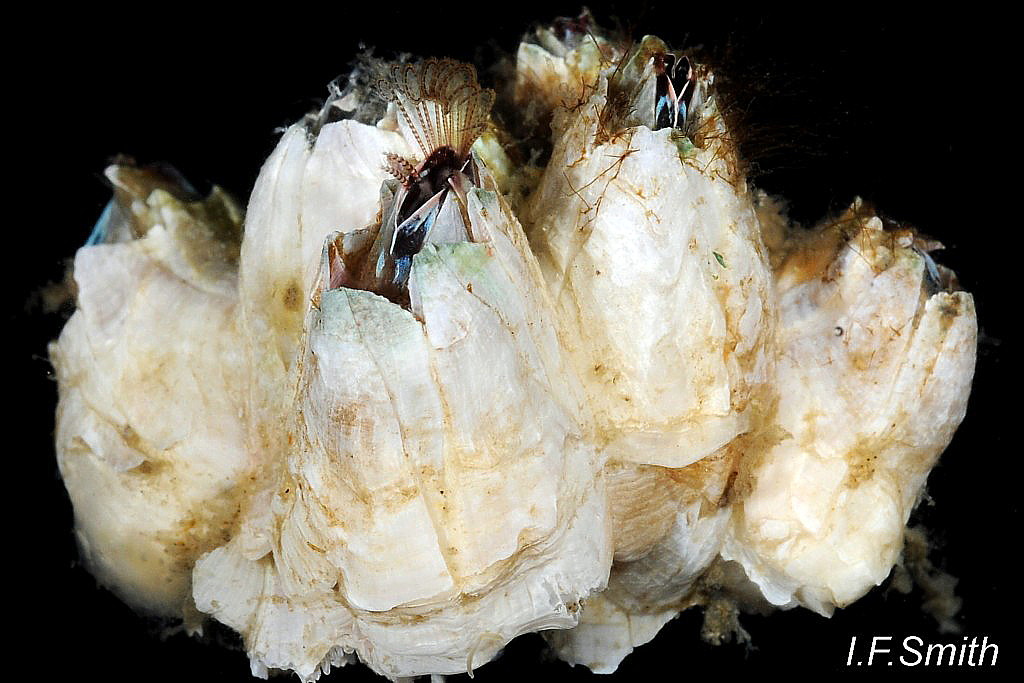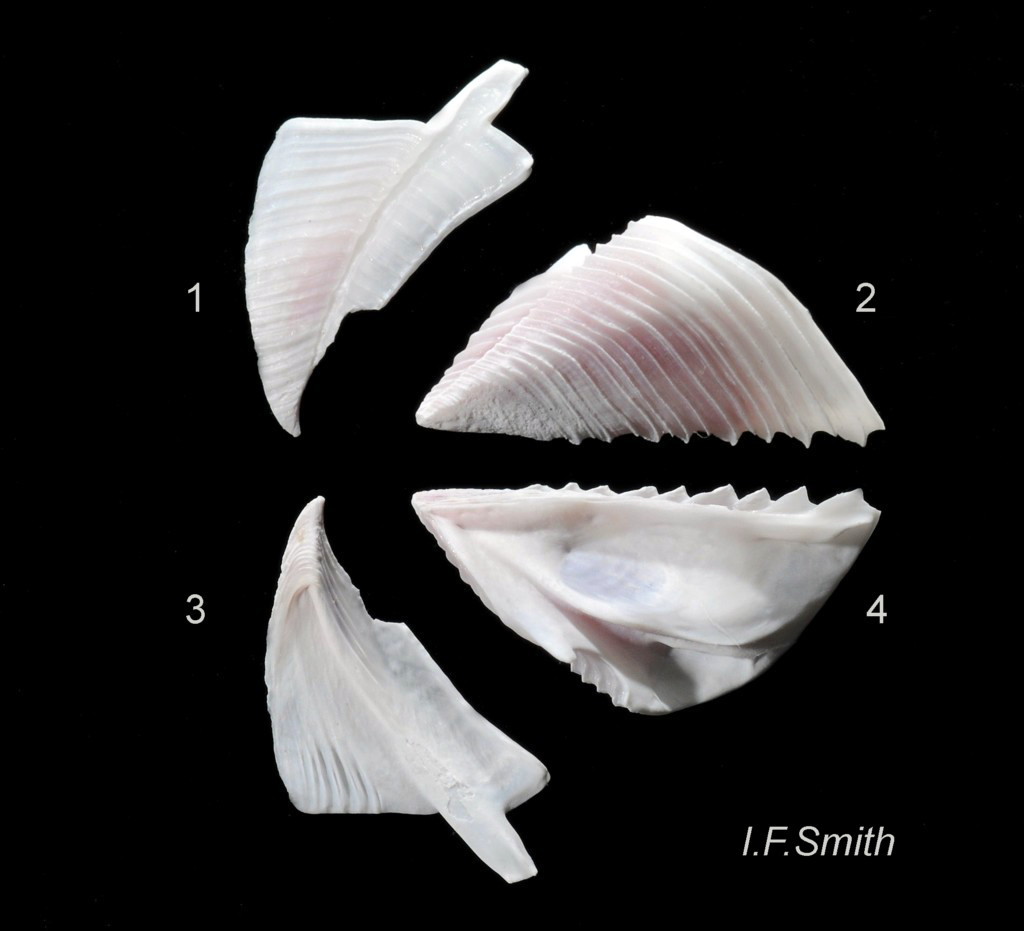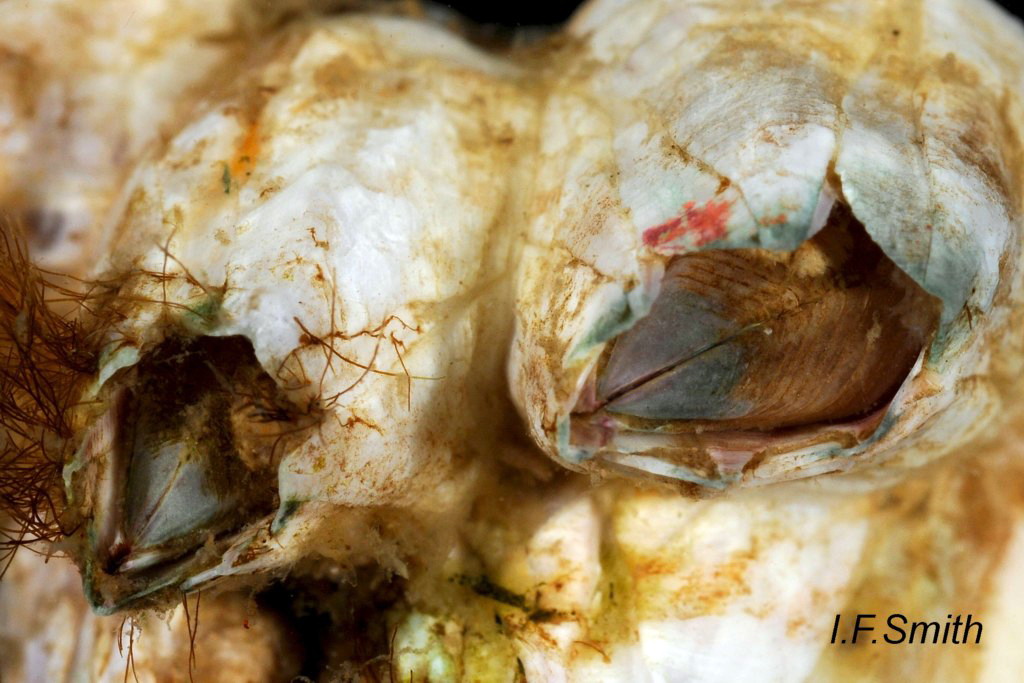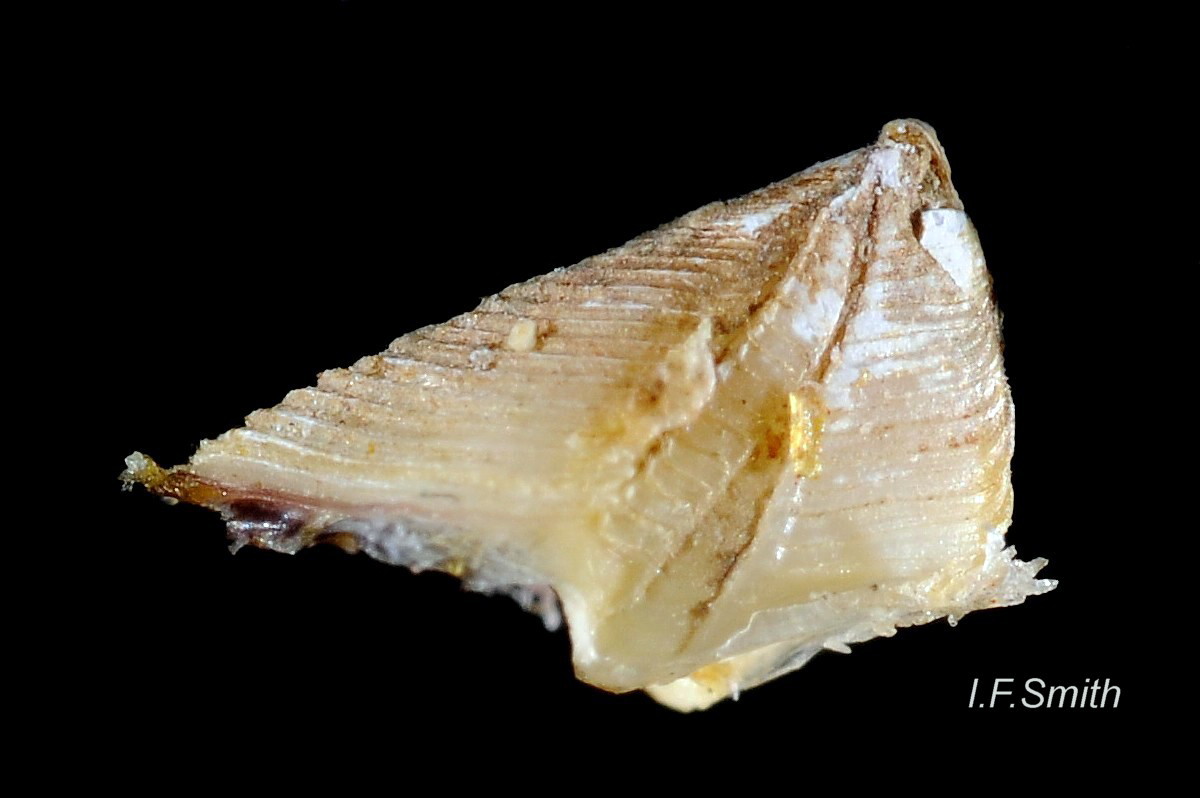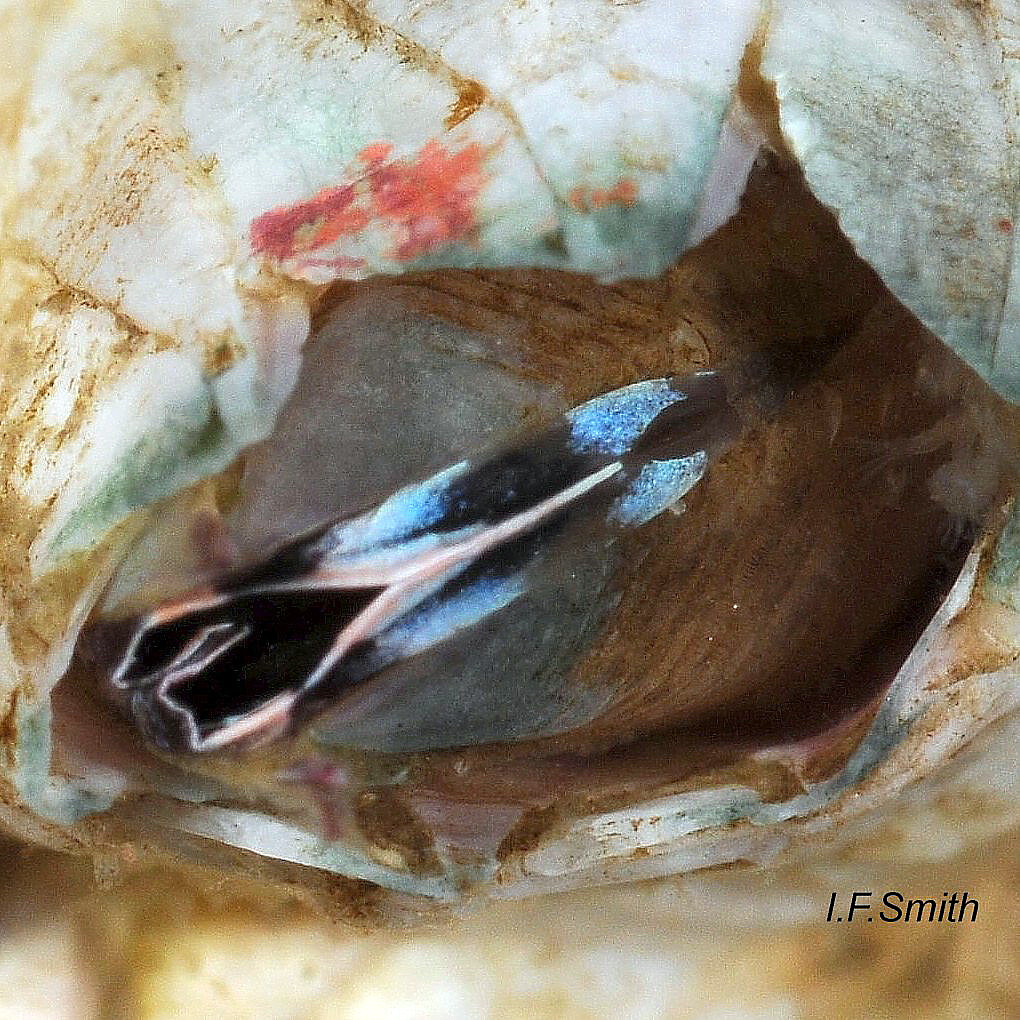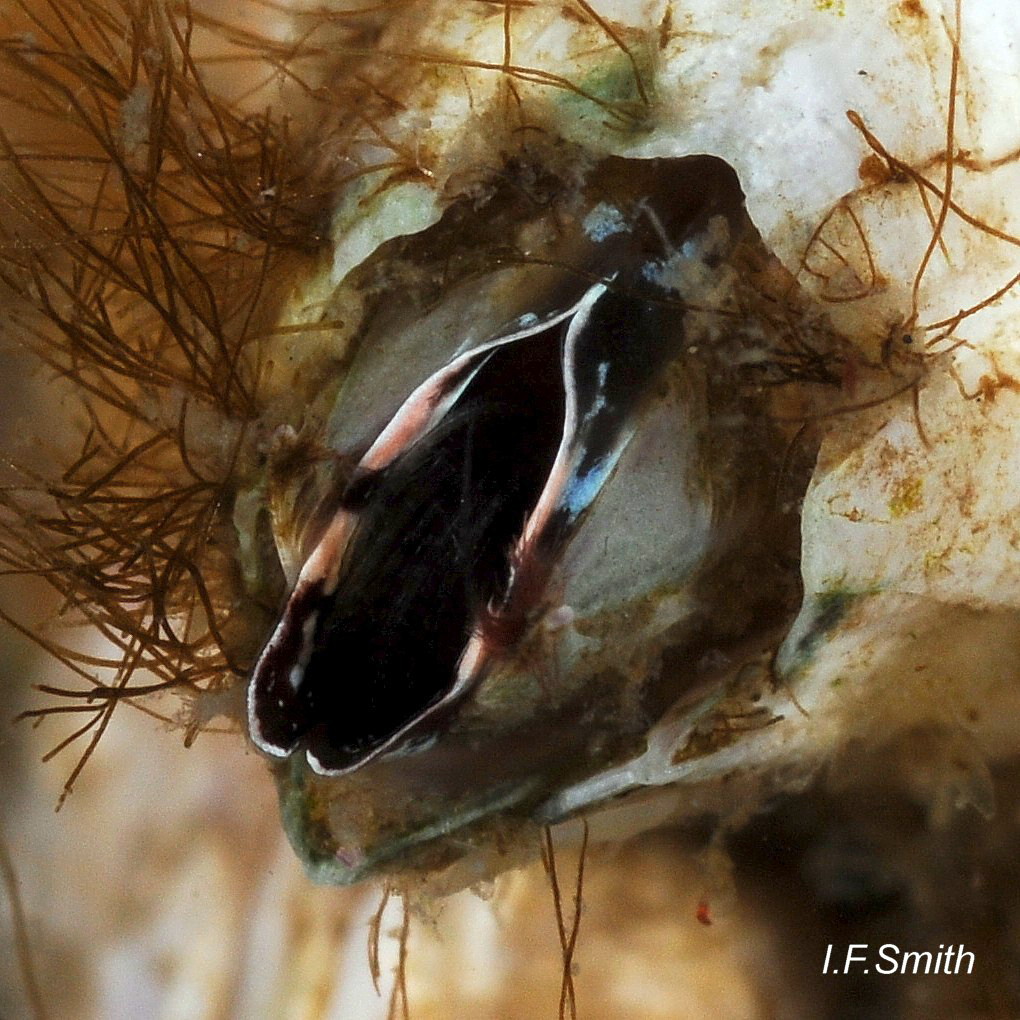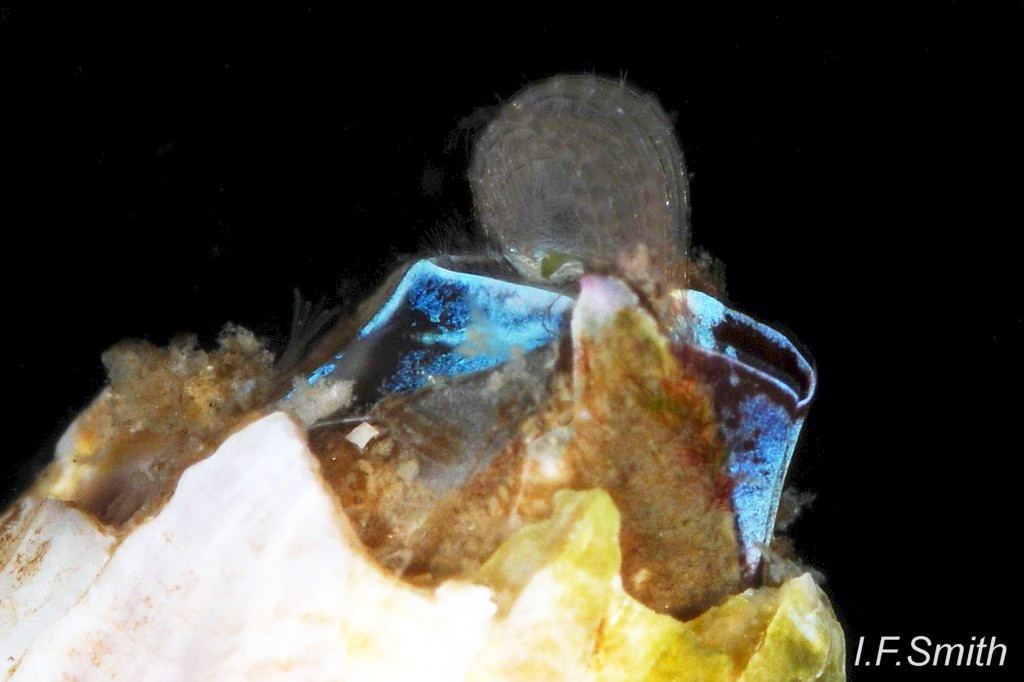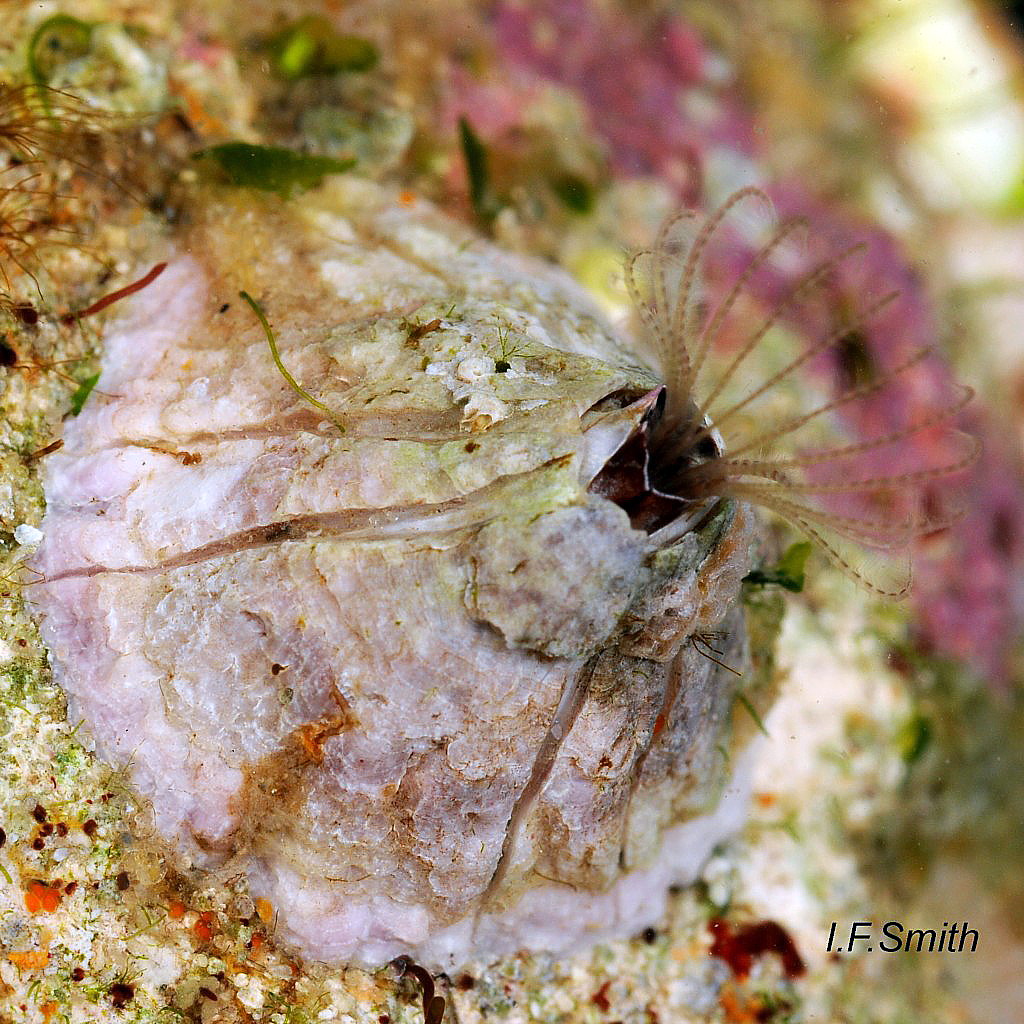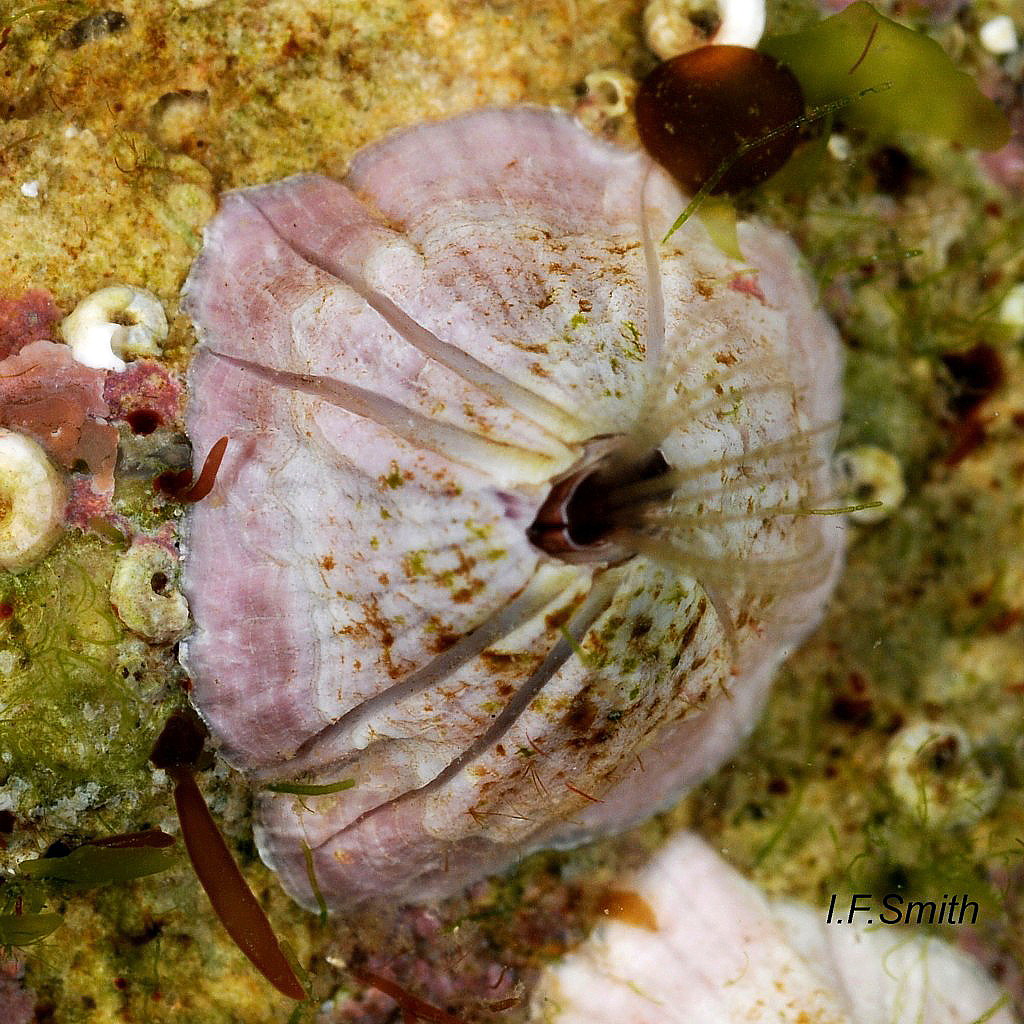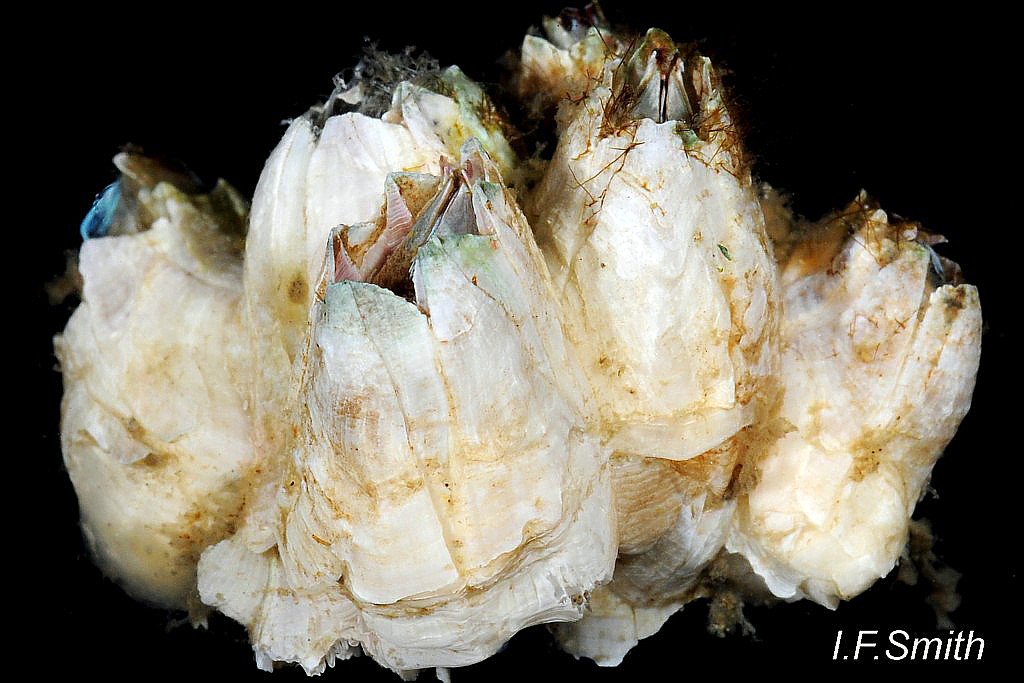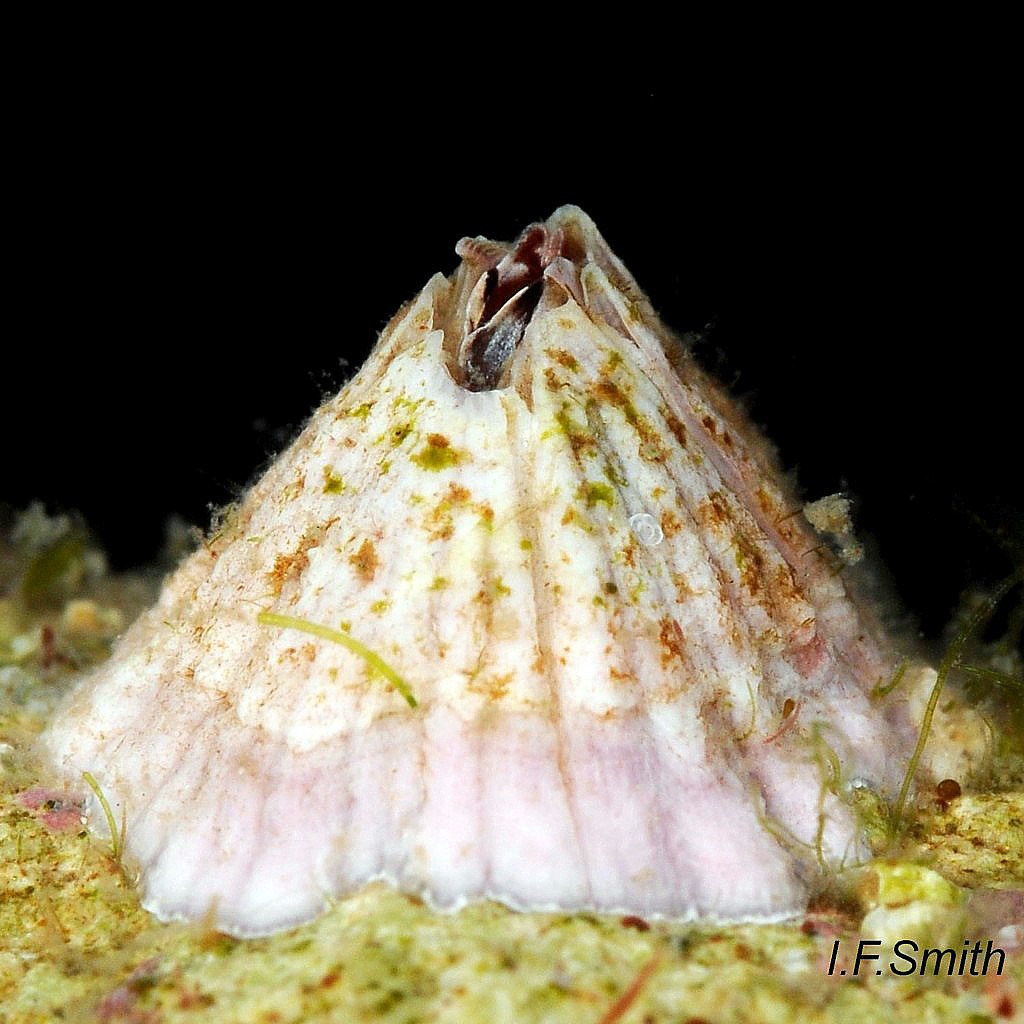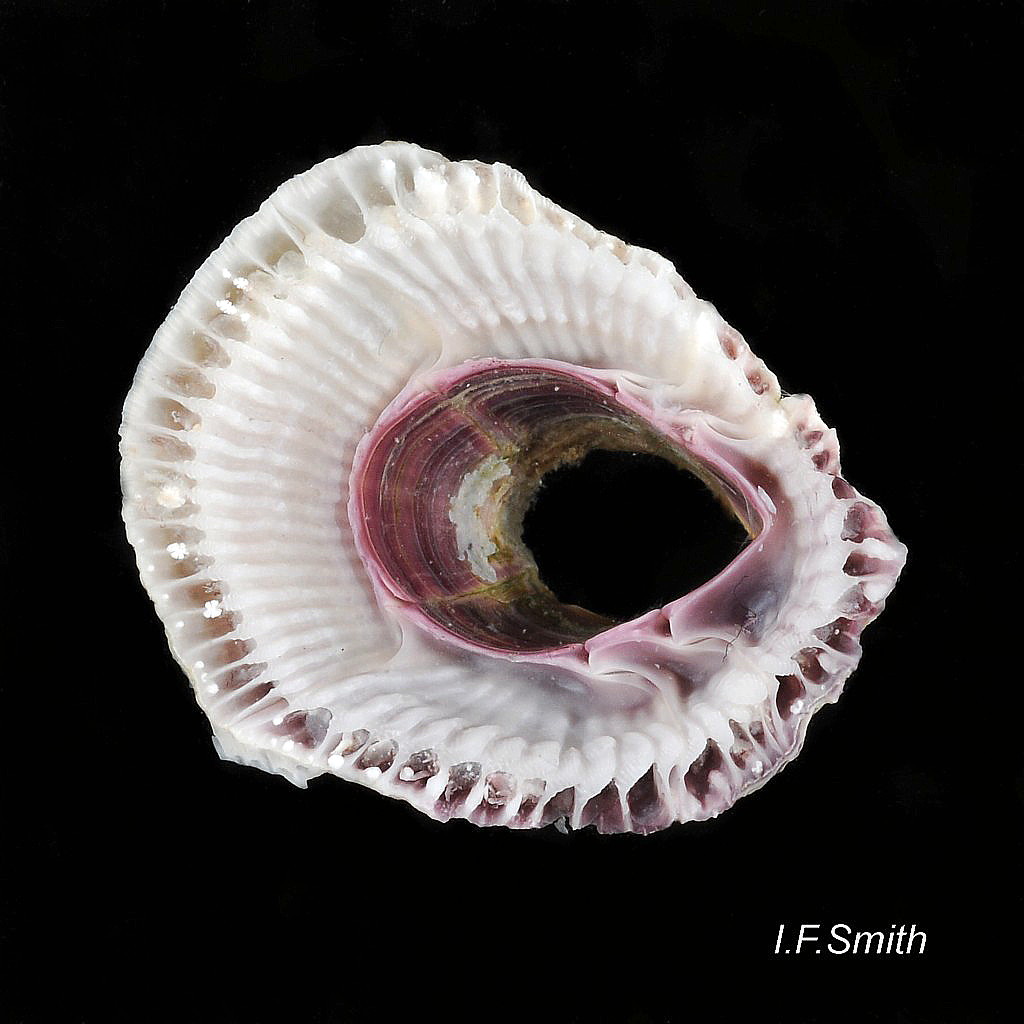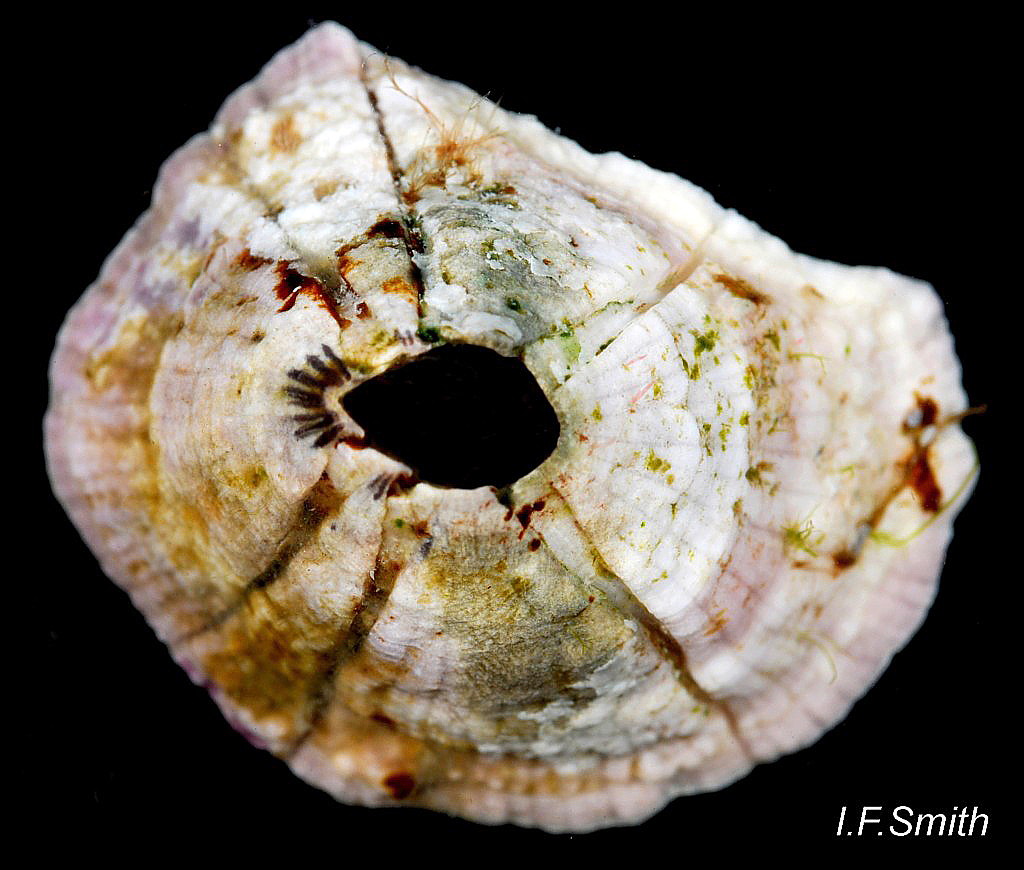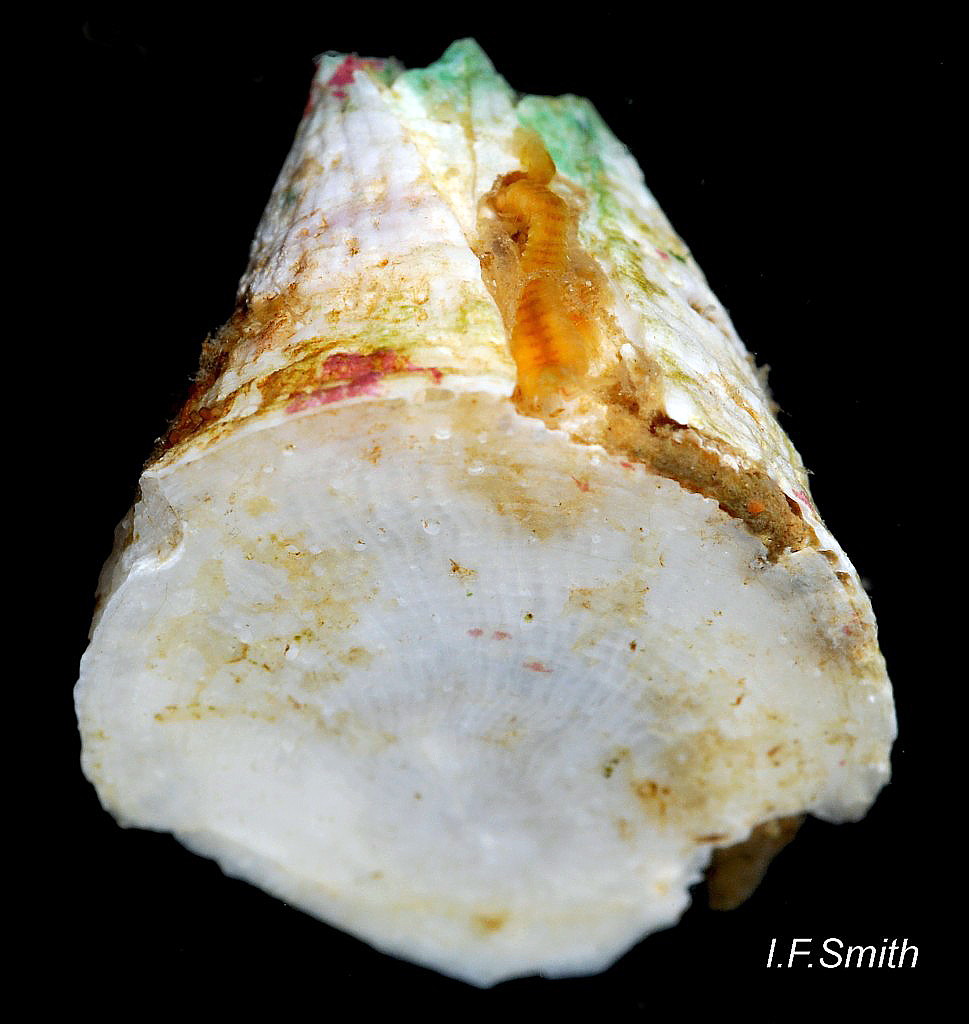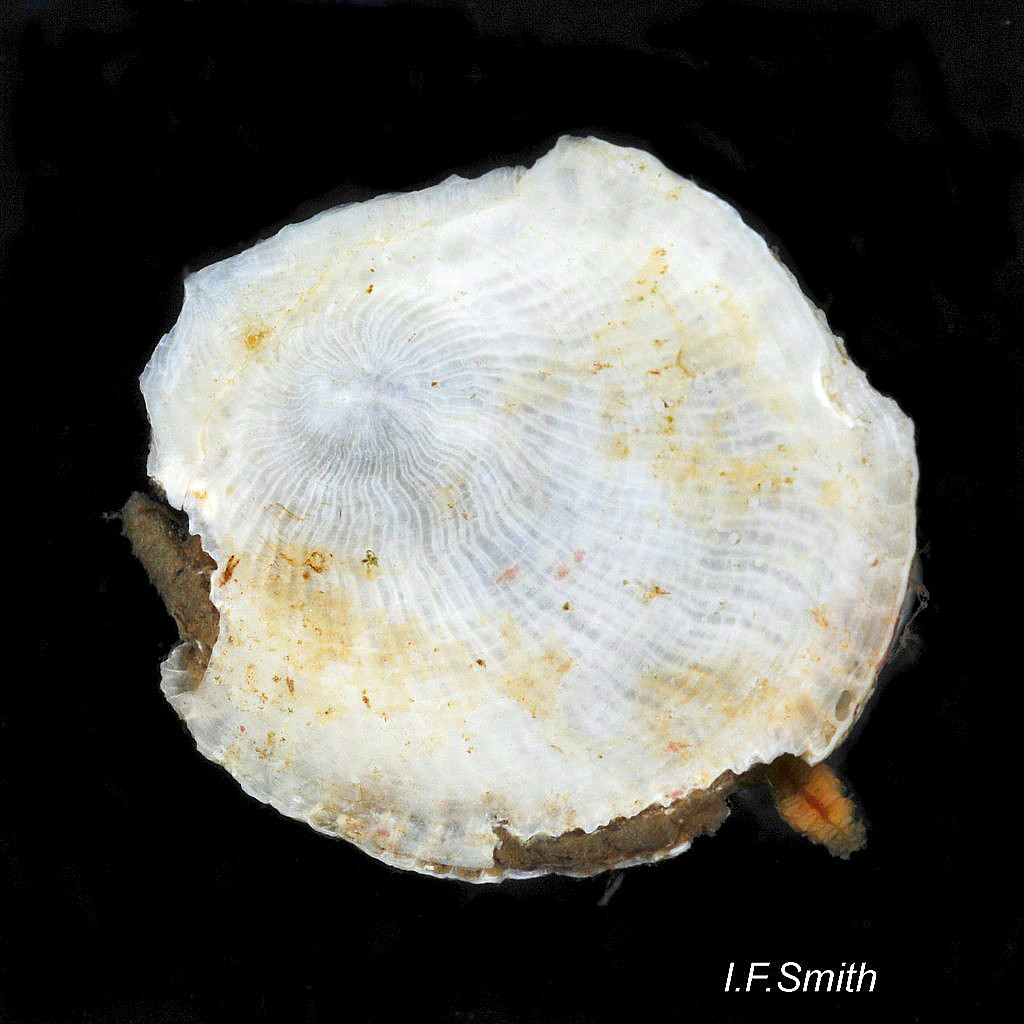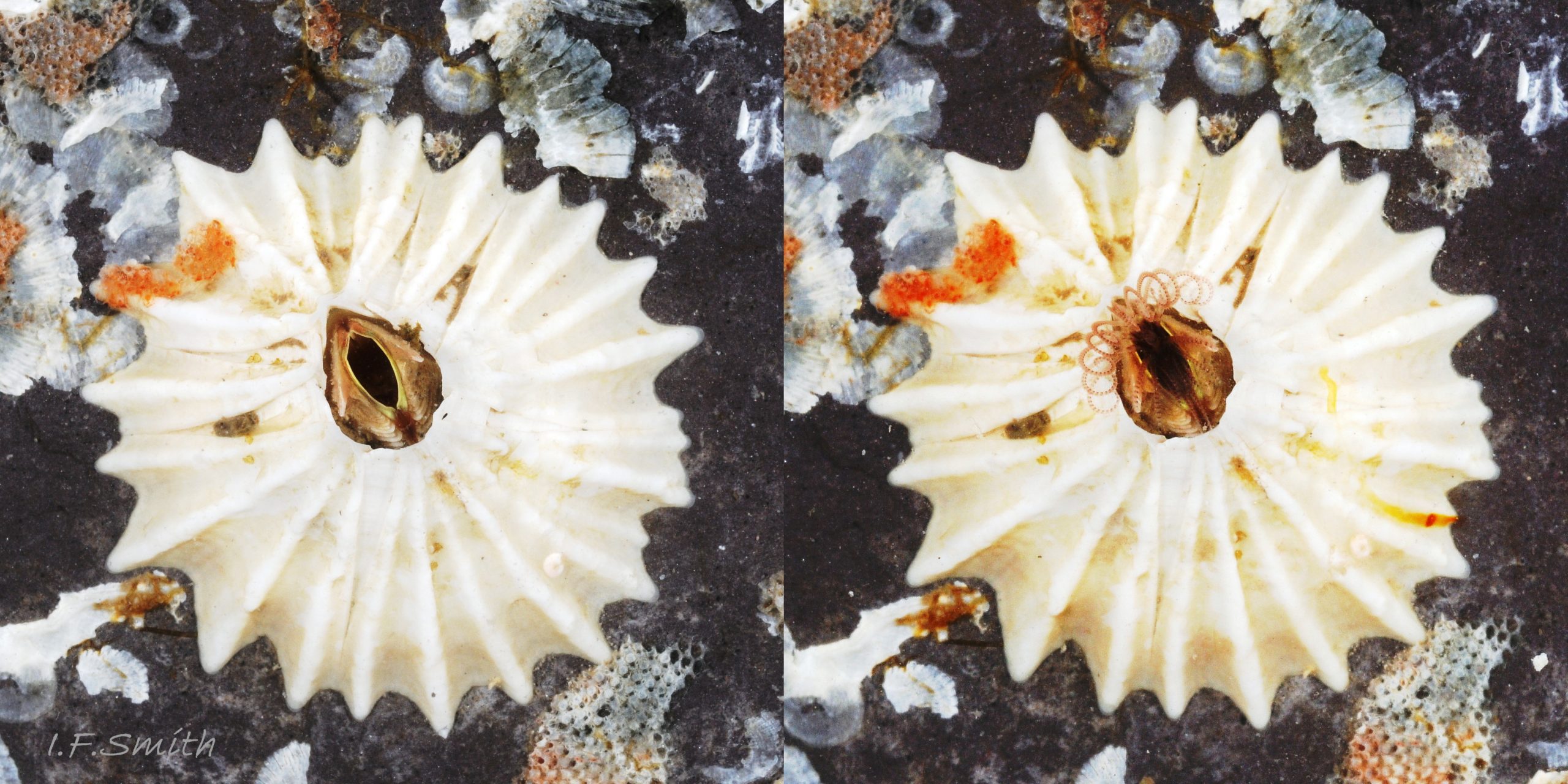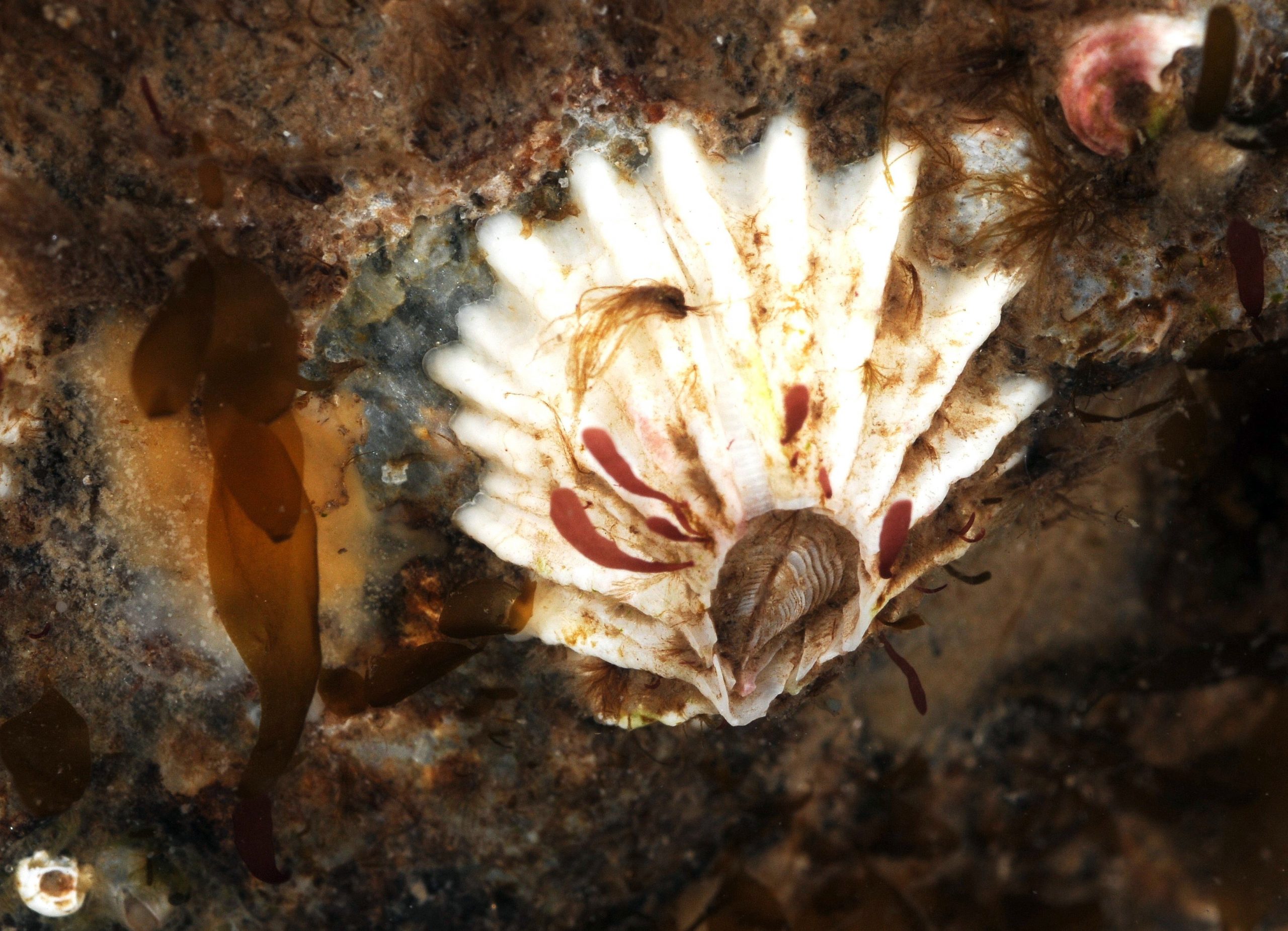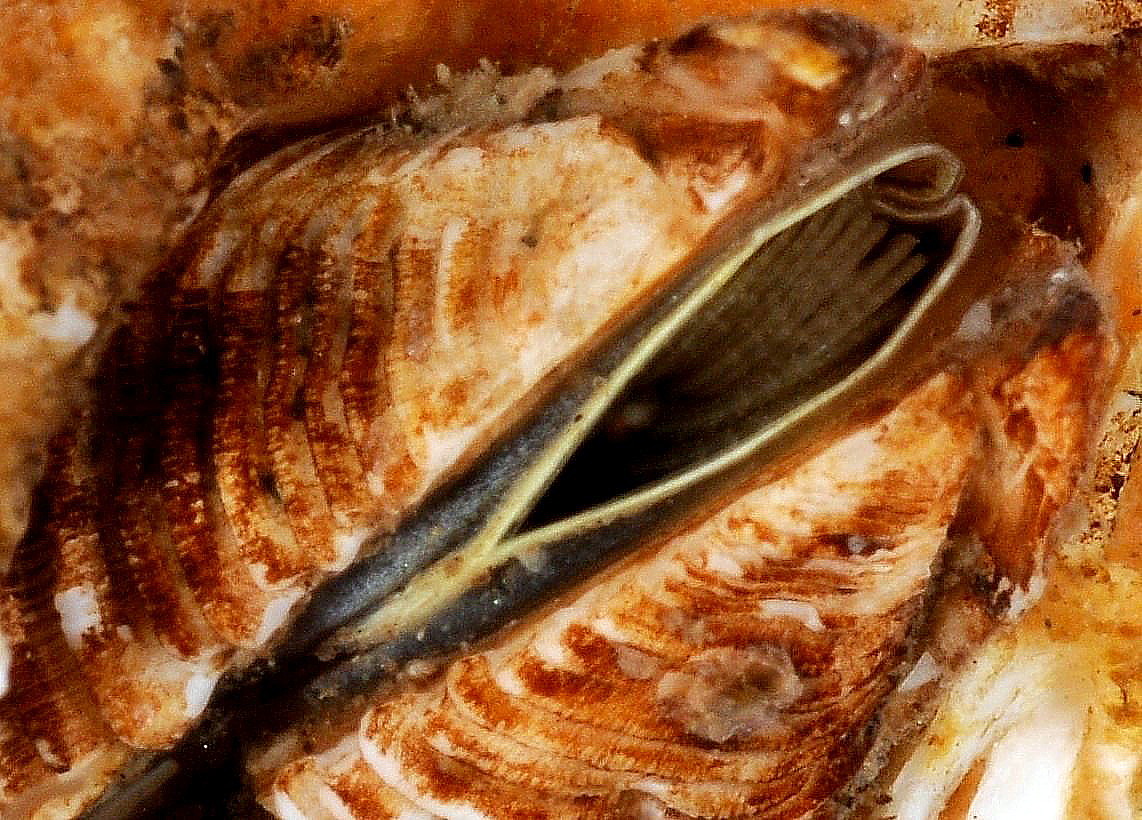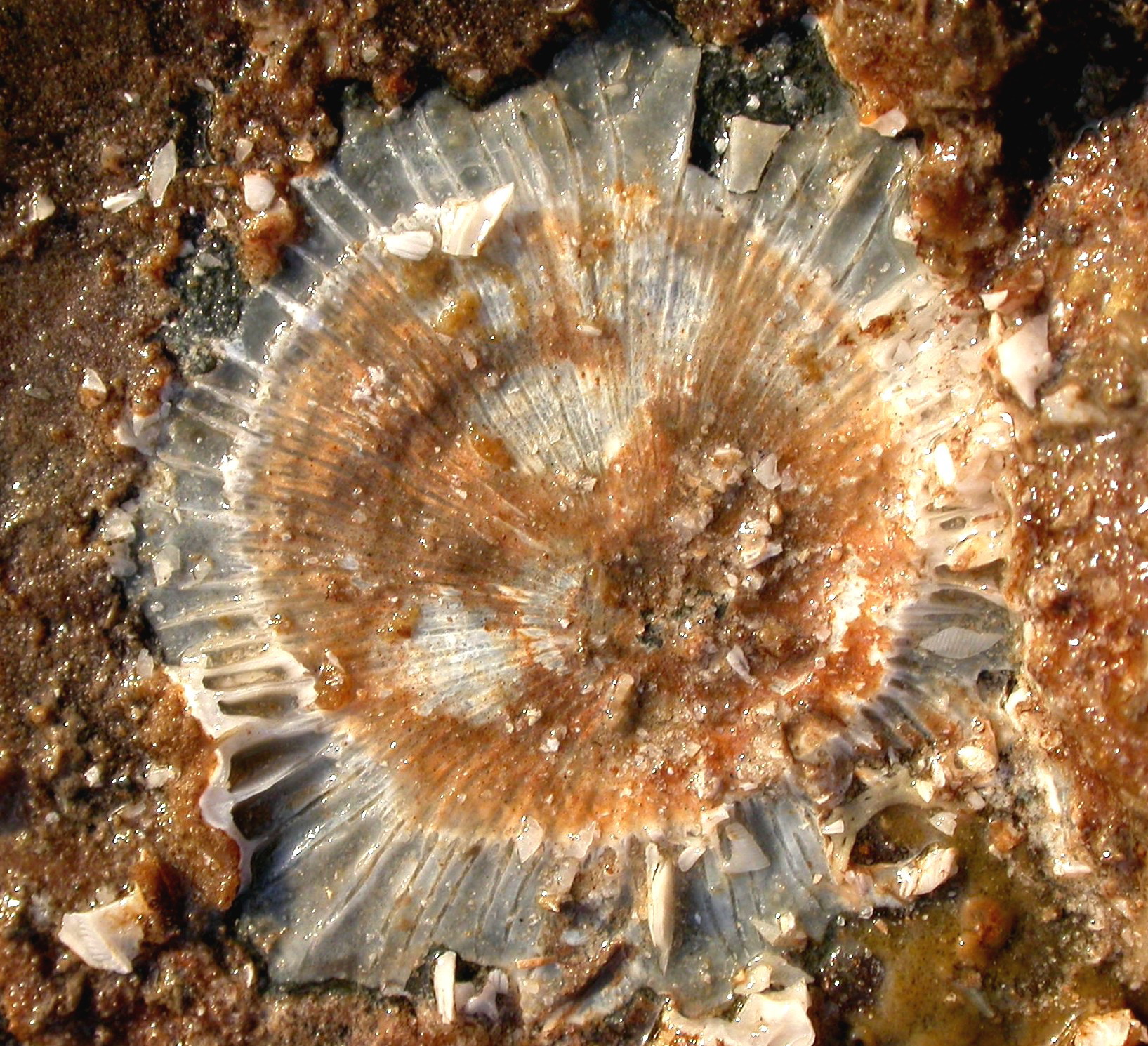Click image to enlarge with full caption. Main text below slider.
Perforatus perforatus Bruguière, 1789
Current taxonomy: World Register of Marine Species www.marinespecies.org/aphia.php?p=taxdetails&id=535477
Recent synonyms: Balanus perforatus
Vernacular names: Perforated barnacle, Crachen dyllog (Welsh).
Glossary below.
Description
Opercular aperture
Pear-shape 01 Perforatus perforatus , ellipsoid 02 Perforatus perforatus or crenate 03 Perforatus perforatus . On uneroded isolated well formed cones, aperture small; about 20% of housing’s diameter 02 Perforatus perforatus . On crowded tall narrow cones, aperture about 75% of housing’s diameter 04 Perforatus perforatus .
Opercular valves
Four valves, two terga and two scuta 05 Perforatus perforatus , open along longitudinal midline with a tergum and scutum each side, but only scutum and tip of spur on tergum visible when live specimens closed 06 Perforatus perforatus . Opercular valves too large to lie horizontally in aperture 03 Perforatus perforatus , so both scutum and tergum tilted 07 Perforatus perforatus . Growth lines and any coating on scutum usually worn grey or white and smooth near apex 06 Perforatus perforatus , which is part most exposed when valves open 04 Perforatus perforatus .
Tergoscutal flaps
Flap briefly lies horizontally as valves start to open 08 Perforatus perforatus , becoming vertical with border folded down inside as it opens, so fold acts as rim 09 Perforatus perforatus . When fully open, flap extends upwards exposing large sheath of tissue 10 Perforatus perforatus . Ground colour of flaps and sheath purplish brown 11 Perforatus perforatus to blackish purple 10 Perforatus perforatus with patches of brilliant blue and sometimes, especially in Mediterranean, pink. Distribution and extent of colours variable. Rim of flap often white, sometimes tinted pinkish 09 Perforatus perforatus . No micropyle.
Wall plates
Six; clearly delineated by recessed alae running from aperture to base, narrow and deep on broad cones 12 Perforatus perforatus , shallow and wide on tall narrow cones 13 Perforatus perforatus . Surface smooth 04 Perforatus perforatus , roughened by erosion 11 Perforatus perforatus or closely radially ribbed 14 Perforatus perforatus revealing pattern of many internal wall tubes; always visible on interior of housing 15 Perforatus perforatus . Erosion may expose tubes externally as black lines 16 Perforatus perforatus . Purple-pink calcareous sheath within aperture 15 Perforatus perforatus . Wall plates usually white with variable amounts of pink 12 Perforatus perforatus , crowded specimens may lack pink 13 Perforatus perforatus . Concentric growth lines sometimes visible around the housing 12 Perforatus perforatus .
Profile
When isolated, may be straight flanked “volcano” cone 14 Perforatus perforatus , or lower cone with rounded flanks 12 Perforatus perforatus . When crowded, may overgrow each other 01 Perforatus perforatus , or, especially if among sponge, may be tall “bishop’s mitre” 04 Perforatus perforatus .
Base
Fragile calcareous plate 17 Perforatus perforatus . Waved radial lines, origin may be off-centre, reflecting direction of water current 18 Perforatus perforatus . Fainter concentric lines result in spider web pattern.
Diameter & height
Diameter usually up to 30 mm, occasionally up to 55 mm in crevices. Height usually up to 20 mm, occasionally 30 mm.
Key identification features
Aperture: small, about 20% diameter of housing, on uneroded cones 02 Perforatus perforatus (but about 75% when crowded 04 Perforatus perforatus ). Pear-shape 01 Perforatus perforatus or ellipse.
Tergoscutal flaps: purple-brown to purple-black with large patches of brilliant blue 10 Perforatus perforatus . Often a white rim 09 Perforatus perforatus .
Wall plates: Usually pink in part. Perforated internally by many tubes, hence “Perforatus”. Recessed alae stretch from aperture to base 12 Perforatus perforatus .
Profile: Cone, “volcano” 14 Perforatus perforatus or rounded, or, if crowded, “bishop’s mitre” 04 Perforatus perforatus .
Base plate: Fragile calcareous with waved radial lines and concentric lines.
Similar species
Balanus balanus (resembles ribbed specimens of P. perforatus)
Aperture: small, pear-shape .
Tergoscutal flaps: Dark brown, or purple-brown, with yellow edge . No brilliant blue patches.
Wall plates: Strongly vertically furrowed. No pink staining.
Profile: Steep cone .
Base plate: Calcareous with radial lines .
Tide level: Confined to LWS and sublittoral.
Habits and ecology
On rock, stones, mollusca etc on sheltered and exposed coasts, and on ships and floating pontoons. Commonest on lower shore, can extend above MTL on exposed shores. Also sublittoral to 40 m. In Britain, breeds June to September, cyprids settle August and September.
Distribution and status
Eastern Atlantic coasts from Wales to Angola, and into Mediterranean. Possibly Indian Ocean. See GBIF map www.gbif.org/species/9802456
British coasts mainly westwards from Dorset to Scilly and thence north to South Wales, but spreading further east (Sussex) and north, especially sublittorally. Irish and Scottish records uncertain (Southward, 2008). See NBN map species.nbnatlas.org/species/NHMSYS0021052700
References & links
Rainbow, P.S., 1984. An introduction to the biology of British littoral barnacles. Field studies6: 1-51.
fsj.field-studies-council.org/media/350581/vol6.1_161.pdf
Southward, A.J., 2008. Barnacles. London, Linnean Society.
Glossary
ala = (pl. alae) side flange of wall plate, overlapped by by radius of next plate.
carina = posterior wall plate adjoining the smaller pair of lid plates (terga). carinal = (adj.) of the carina.
cirri = (sing. cirrus) feather-like thoracic limbs used in filter feeding.
cypris = (pl. cyprids) final larval bivalved stage in barnacle development.
euryhaline = tolerant of wide range of salinities.
HW = high water level.
HWS = level of high water spring tide.
lateral plates = wall plates other than end plates (depending on sp., strictly may be rostro-lateral or carino-lateral).
LWN = level of low water neap tide.
micropyle = small breathing/sensing hole between tergoscutal flaps, sometimes visible when operculum shut. Found on spp. that are left out of water for long periods.
MLWS = level of mean low water spring tide.
MTL = mid-tide level.
opercular = (adj.) of the operculum (aperture lid).
operculum = moveable lid-like structure used to close the aperture.
paries = ( pl. parietes) central section of wall plate, flanked by alae and radii.
ppt = parts per thousand (of salt in water).
radius = (pl. radii) side flange of wall plate, overlaps ala of adjacent plate.
right = on right when barnacle viewed from above with carina at 12 o’clock.
rostral = (adj.) of the rostrum.
rostrum = anterior wall plate adjoining larger pair of lid plates (scuta). (Lost on Austrominius and balanoids; place taken by fused rostro-laterals; referred to as rostrum for simplicity.)
scuta = (sing. scutum) the larger plates of the operculum (lid).
sessile = (adj.) permanently attached to substrate (of immobile organism).
stenohaline = unable to tolerate much variation in salinity.
terga = (sing. tergum) the smaller plates of the operculum (lid).
¬¬tergoscutal flaps = membranous “lid seals”, (most visible as valves start to open)
